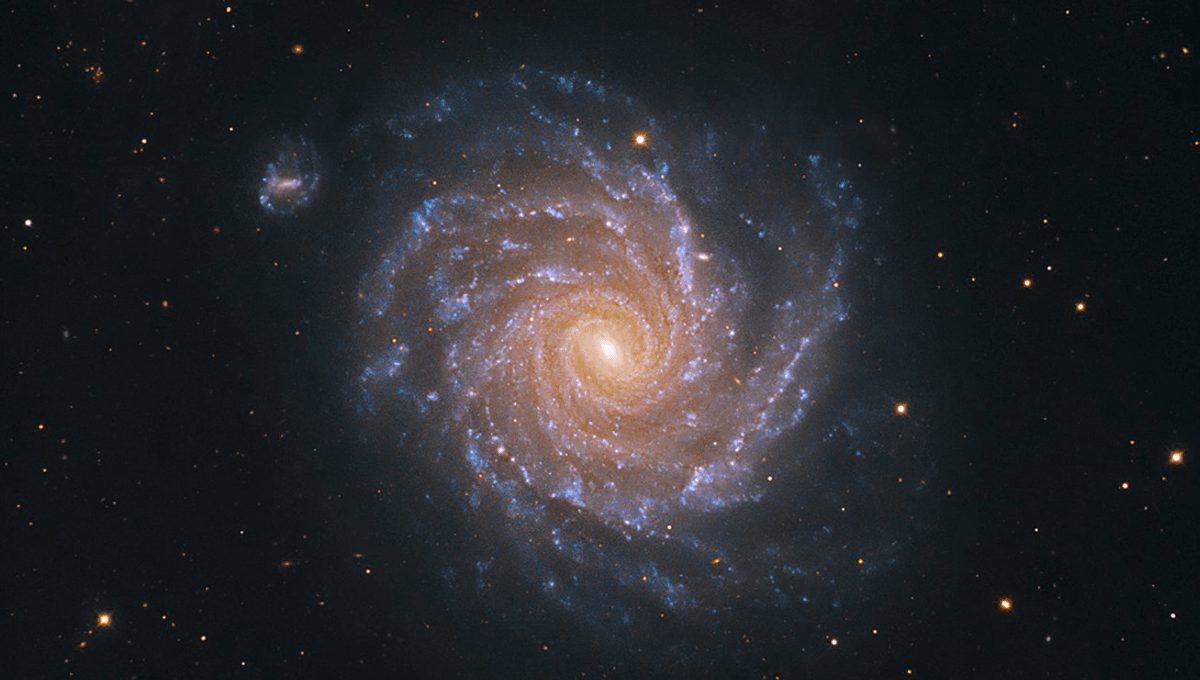
If you are even vaguely interested in the way the universe works, you have likely read about a mysterious substance proposed by physicists called “dark matter“.
Dark matter is invisible matter that doesn’t emit, reflect, or absorb light, and only interacts with normal matter through gravity. We have never detected it directly – but physicists are very confident of its existence and believe that there is about five times as much of it in the observable universe than regular matter which makes up the stars, planets, dust, and everything else we enjoy (e.g. pies).
You may be wondering how physicists know that there must be this invisible matter out there if we cannot directly detect it. The answer goes back to the work of Fritz Zwicky in the 1930s, and Vera Rubin and Kent Ford’s observations in the 1970s.
In 1933, Swiss astronomer Fritz Zwicky studied the Coma Cluster – a large galaxy cluster more than 20 million light-years in diameter, containing thousands of galaxies – and found something quite odd. Galaxies within the cluster were moving at such high speeds that they should fly away from each other, given the amount of visible mass within the galaxies and the cluster. He hypothesized that the region must contain a large amount of “Dunkle Materie” (dark matter) in order to keep the cluster stable.
Though puzzling, the study did not change cosmology too quickly. But similar results came from observing other clusters, and then stars within the galaxies themselves.
“By using Newton’s law of gravitation and the centrifugal force one can calculate the rotation speed of a mass in circular motion around another one as a function of the distance to the rotation center,” a paper on the topic explains. “Through these simple calculations it is shown that the rotation speed decreases when the distance grows.”
This works when we look at our own solar system. The further an object is from the rotational center (our Sun) the slower its rotation around the center.
But when Vera Rubin and Kent Ford plotted the velocities of stars within spiral galaxies – by looking at the shift in wavelengths of light as they move towards and away from us – they found the same odd phenomenon as Zwicky. As spiral galaxies contain the most (visible) mass towards the center, they were expecting the stars towards the center of the galaxy would rotate faster than those at the galaxy’s edge. If the stars at the galaxies’ edges rotated at the same high speeds as at the center – and visible mass is all that is within them – you would expect those stars to become unbound from the galaxy, with not enough gravity to keep them within it.
And yet this is precisely what they found. Stars at the sparsely-populated edges of spiral galaxies were moving just as fast as stars toward their galactic centers. Studying over 60 galaxies they found the same result, with Rubin concluding that galaxies must contain around 10 times more mass than is visible in order to explain these movements.
The more we study galaxies, the more we find a discrepancy between how much visible mass they have and the velocities at which we would expect their stars to move, given their visible mass. It is now widely accepted that the universe contains “dark matter”, vastly out-massing the visible matter we see – though the debate about what that matter is is still an ongoing debate, and detection still remains out of reach.
Alternatives to dark matter do exist (such as MOND, which somewhat arbitrarily posits that gravity becomes weaker at large distances) but any theory about the dynamics of our universe must now explain within it why stars at the outer edge of a galaxy rotate as fast as they do, while still being bound to it.
“We have peered into a new world,” Rubin wrote of that physics-changing observation, “and have seen that it is more mysterious and more complex than we had imagined. Still more mysteries of the universe remain hidden. Their discovery awaits the adventurous scientists of the future. I like it this way.”
Source Link: What Dr Vera Rubin Saw In Spiral Galaxies Changed Physics Forever